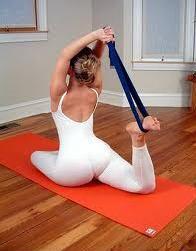Preventing Dance Injuries
 Recent literature has shown that the prevalence of injury among dancers is extremely high. Achilles tendon ruptures, which regularly occur when an athlete is participating in an activity that requires a high level of acceleration, such as jumping or leaping, are particularly common among high-intensity dancers. Practicing these complicated movements constantly places additional stress on the back of the calf, leading to painful injury.
Recent literature has shown that the prevalence of injury among dancers is extremely high. Achilles tendon ruptures, which regularly occur when an athlete is participating in an activity that requires a high level of acceleration, such as jumping or leaping, are particularly common among high-intensity dancers. Practicing these complicated movements constantly places additional stress on the back of the calf, leading to painful injury.
Dancers can avoid these debilitating Achilles tendon injuries by following three easy, preventative steps:
- Warm Up
As competition season draws near, many dance teams begin cutting out exercises at the beginning of practice to devote more time to learning the routing. But cutting out your stretching may lead to disaster. Before practice starts, spend a couple of minutes doing jumping jacks or running in place. After you’ve broken a sweat, stretch your legs thoroughly with stretches to include pike, butterfly, frog, straddle, lunges, downward dog and the splits. - Strengthen Your Calves
If your calves are weak, you are setting yourself up for an Achilles tendon rupture. Strengthen your calves at the gym by doing leg curls and leg extensions. If you can’t stand weight training, attend a ballet class. There is no better calf workout than standing at the ballet barre! - Look for Achilles Tendinitis
Achilles tendinitis often precedes an Achilles tendon rupture. After a work-out, use your thumb and forefinger to pinch the skin along the back of your calves. If your Achilles tendon hurts in response, you may want to be evaluated for Achilles tendinitis. If possible, get a specialized trainer or dance coach to check out your calves. Otherwise, visit your primary care physician as soon as possible.
With the involvement of different body types, flexibility, strength, shoe type, floor surfaces, and other environmental features, the potential for influencing injury occurrence increases. As the art of dance continues to change and place higher challenges on the dancer, the dance rehabilitation team at Bon Secours In Motion possesses the distinct body of knowledge and specialized skills to bring the injured dancer back to optimal performance status and to help healthy dancers stay healthy.
+ Learn more about In Motion’s Dance Rehabilitation program!
+ Find a physical therapy specialist near you!
Source: Achilles tendon rupture: Prevention tips for dancers.

